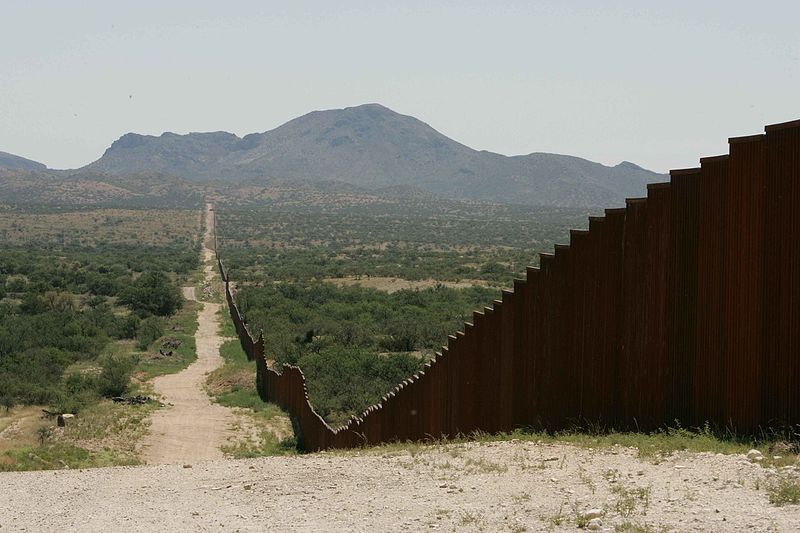Friday, November 9th 2018
WASHINGTON (Sinclair Broadcast Group) — The Trump administration’s latest response to the Central American migrant caravan has been a dramatic change in U.S. asylum process that will increase pressure on the Mexican government to offer protection to individuals fleeing violence and persecution in Central America.
On Friday, President Donald Trump formally issued a proclamation that will make it more difficult for immigrants to claim asylum if they’re caught crossing the border between legal ports of entry. The executive action reaffirms a complex 76-page rule issued Thursday by the Department of Homeland Security (DHS) and Justice Department.
Under the new rule, “aliens who enter the United States unlawfully through the southern border in contravention of this proclamation will be ineligible to be granted asylum,” the proclamation stated.
At the White House, Trump summarized, “People can come in, but they have to come in through the ports of entry.”
The White House argued that the U.S. asylum system is “overwhelmed” with allegedly “meritless claims” of credible fear. In the past decade, the number of asylum request has increased from 5,000 to 97,000 with the majority of asylum seekers coming from the Northern Triangle countries of El Salvador, Guatemala and Honduras. In 2018, more than 70,000 of those asylum requests came from individuals after they crossed the border illegally, according to government statistics.
While the rule attempts to funnel a large number of asylum seekers through official ports of entry, it also seeks to shift the burden of Central American migration onto Mexico. President Trump and members of his administration have repeatedly pressured the Mexican government to do more to stop the flow of Central American migrants to the United States.
In April, when the Trump administration was confronting the first migrant caravan, DHS Secretary Kirstjen Nielsen stated that “individuals of the ‘caravan’ seeking asylum or other similar claims should seek protection in the first safe country they enter, including Mexico.”
Reacting to the caravan currently en route through Mexico, President Trump tweeted the warning, “People have to apply for asylum in Mexico first, and if they fail to do that, the U.S. will turn them away.”
Under international law, asylum seekers are encouraged to apply for relief or legal status in the first country available to them, but it is not an obligation.
Similarly under U.S. law. Central American migrants technically have no obligation to apply for asylum in Mexico, contrary to the president’s tweet. However, it is often a factor considered by immigration judges in deciding whether or not to grant asylum or permanent resettlement. In other words, some immigration judges will reject asylum claims if a person had the practical ability to apply for asylum or another legal status before reaching the United States.
Otherwise, the United States can only lawfully turn away asylum seekers coming from so-called “safe third countries.” The Trump administration has been trying unsuccessfully to negotiate a safe third country agreement with Mexico to relieve pressure on the U.S. asylum system. Under a safe third country agreement, asylum seekers would be required to apply for asylum in Mexico.
Canada is the only country with which the United States has a safe third country agreement. Under Trump, that appeared to be in jeopardy. In early 2017, Canadian officials ordered a review of the agreement raising serious concerns about Trump’s crackdown on illegal immigration and possible weakening of asylum protections. Ultimately, Canadian immigration officials concluded that the U.S. “continues to meet the requirements for designation as a safe third country.”
Two Republican senators recently urged the administration to secure a safe third country agreement with Mexico, arguing the agreement “would send a message to our partners across Central American that they, too, must share the burden of unsanctioned mass migration.”
The Trump administration is continuing to pursue an asylum agreement with Mexico and is using the latest immigration regulation as leverage. “The president’s proclamation today very clearly says that the asylum regulations will no longer take effect once there is safe third country agreement with Mexico and the United States,” noted Sarah Pierce, an analyst at the Migration Policy Institute. “So this administration is clearly trying to keep the pressure on Mexico to reach such an agreement.”
Trump stated in his proclamation that suspending certain forms of asylum “will facilitate ongoing negotiations with Mexico and other countries about ways regarding appropriate cooperative arrangements to prevent unlawful mass migration to the United States through the southern border.”
President Trump’s threat to “turn away” asylum seekers, though not necessarily enforceable, raised the question of why so many choose to continue a long, dangerous journey of more than 1,000 miles through Mexico to claim asylum in the United States.
“There is a concern, as a practical matter, that the Mexican asylum system is not up to international standards,” explained William Stock, a top immigration lawyer and former president of the American Immigration Lawyers Association. He cited international reports indicating Mexico only completes about one-third of the asylum cases brought before the courts.
More often, migrants are returned to their country of origin where they fled from violence and persecution. Facilitating that would put the United States at odds with its obligations under international and domestic law. Stock said. “Our fundamental obligation is not to return any asylum seeker to a country where they would face persecution,” he affirmed.
Additionally, the country continues to struggle with high rates of homicide, drug violence and specific threats to migrants including violence and human trafficking.
For many migrants, seeking asylum in Mexico is not an option, explained Ashley Huebner, who oversees the National Immigrant Justice Center’s Asylum Project. “There are concerns about whether Mexican can be deemed a safe third country,” she said, describing incidents of kidnapping, trafficking and extortion by corrupt law enforcement officials. “They are not able to live there safely and asylum is either not an actual option offered to them or it’s not a feasible option given their safety concerns.”
Huebner acknowledged that the “longterm goal” of the Trump administration appears to be to shift the pressures of Central American migration onto Mexico. However, the immediate result of the asylum restrictions will be to overwhelm U.S. ports of entry and areas along Mexico’s northern border, exacerbating the challenges faced by migrants and the governments of both countries.
Despite its deficiencies, Mexico has stepped up its efforts to offer asylum to individuals traveling with the caravan. At the border with Guatemalan border last month, Mexican authorities met thousands of migrants traveling in the caravan and offered them the opportunity to apply for asylum in Mexico.
In coordination with the United Nations High Commission on Human Rights (UNHCR), the Mexican government and Refugee Commission has registered more than 3,200 asylum requests so far. UNHCR is also surging staff and resources to Mexico to provide migrants with shelter, food, medical supplies. Last week, Mexican authorities also reported issuing 2,697 temporary visas to individuals and families while they wait for a more permanent status.
But according to international reports, the government is still not able to manage the volume of migrants. “The numbers are much larger than the asylum system and existing shelters are equipped for,” said Mark Manly, UNHCR representative in Mexico.
International assistance has helped accommodate the thousands of migrants who have arrived in Mexico City in recent days but more asylum seekers are on the way. Two smaller caravans from Central America with roughly 3,000 migrants total recently crossed Mexico’s southern border and are heading north.
Given the number of migrants traveling north, there are growing concerns that the new Trump directive will result in a humanitarian crisis on the southern border. As a larger number of migrants are directed to official ports of entry, it is unclear whether U.S. immigration authorities will be able or willing to process the high volume.
According to documents obtained in a recent court filing, the United States has employed a “Turnback Policy” since at least 2016 to limit the number of asylum seekers that can be processed at a given time. DHS Secretary Nielsen acknowledged the policy earlier this year, telling Fox News, “We are metering, which means that if we don’t have the resources to let them in on a particular day, they are going to have to come back.”
This has resulted in asylum seekers being turned away from official ports of entry and forced to wait days or weeks on the Mexican side of the border often without adequate food, shelter or security.
“That’s happening even before the caravan has reached our borders and before the administration made it impossible to apply for asylum between ports of entry,” Pierce explained. “We might actually be leading up to a humanitarian crisis on the Mexican side of the border if we have asylum seekers who are waiting for long periods of time outside those ports of entry.”
The Trump administration has said it will increase personnel and resources at official ports of entry. DHS has not yet confirmed whether it will receive additional support.
Legally, the Trump administration has argued it is within its rights to restrict certain asylum seekers. The rule invoked executive authorities similar to those used in the 2017 travel ban and upheld by the U.S. Supreme Court.
Immigration lawyers and federal judges across the country are preparing to challenge the order. On Friday, the American Civil Liberties Union filed suit in a San Francisco federal court. It hopes to invaligate the rule while litigation is pending. If accepted, it could result in a stay on the rule before the migrant caravan arrives at the U.S.-Mexican border.
Many have argued the rule violates U.S. laws requiring the protection of individuals fleeing persecution as well as international refugee law. “This is going to result in legitimate asylum seekers being denied access to much-needed protection, which in turn will result in them being returned to their countries where they are going to continue to experience persecution, torture and likely death,” Huebner emphasized. “It will have significant real-world consequences for individuals who are fleeing harm.”






